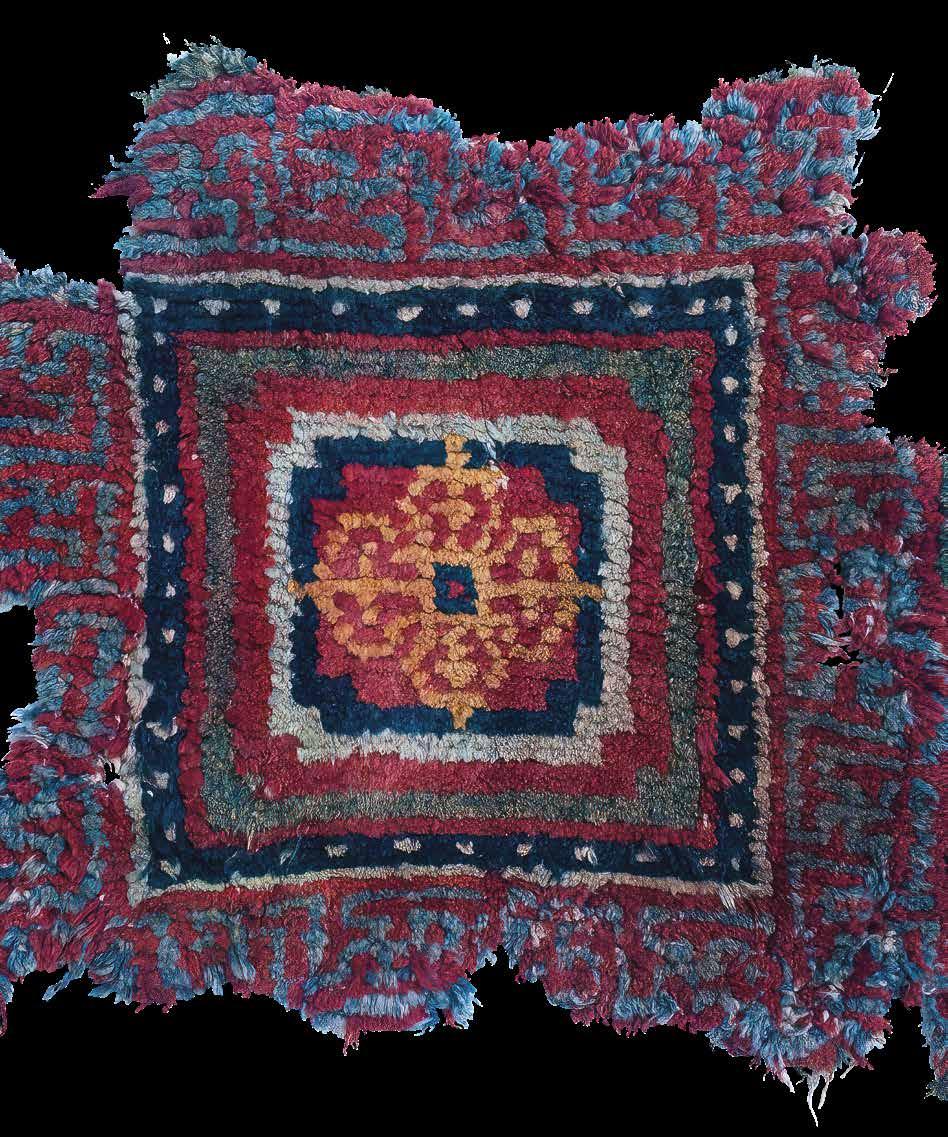
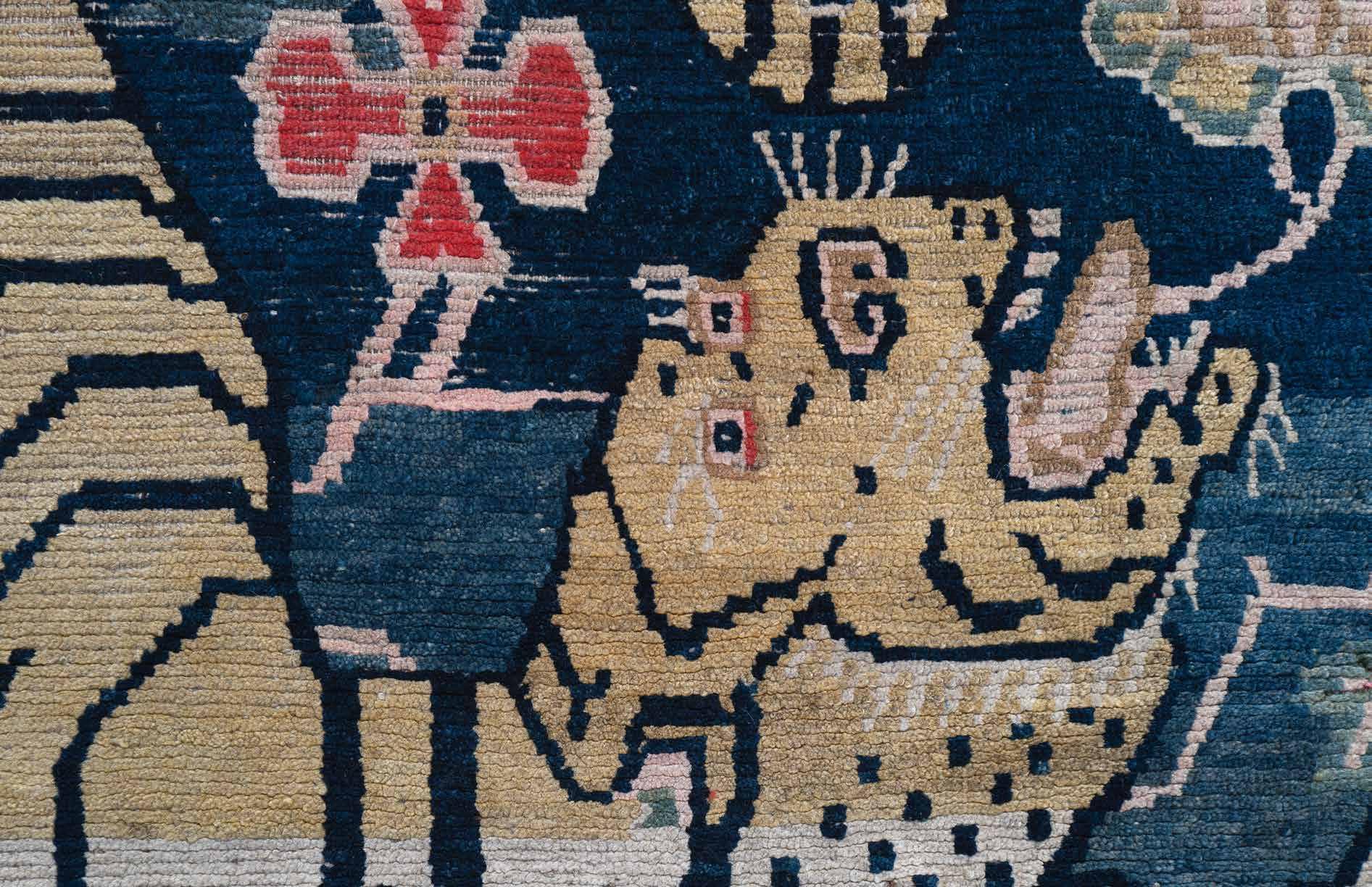

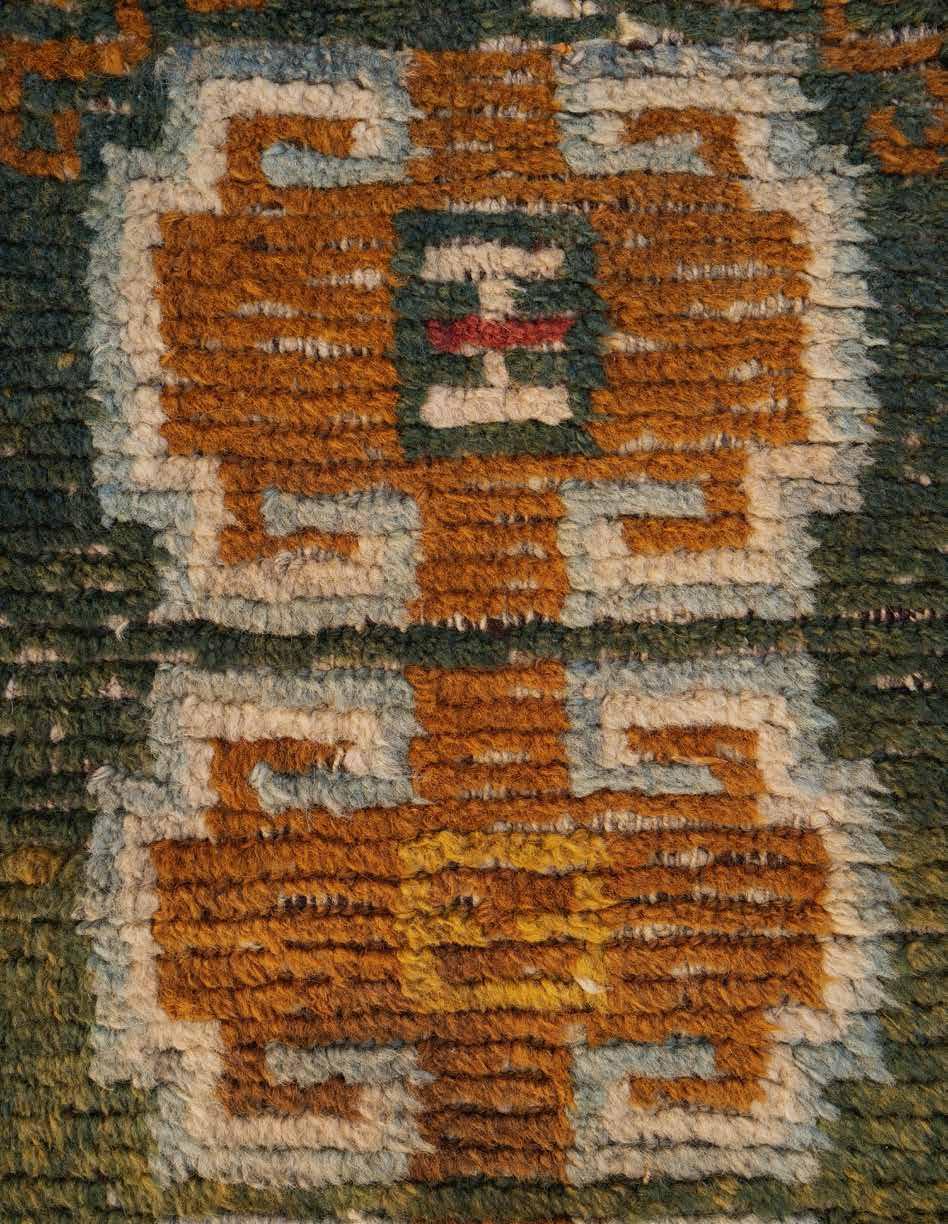

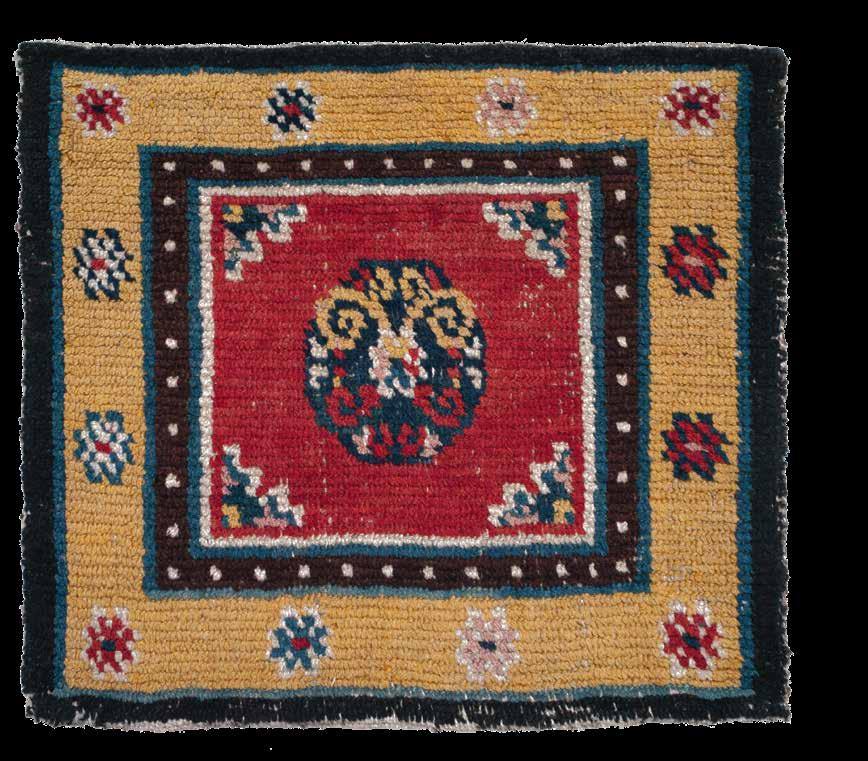
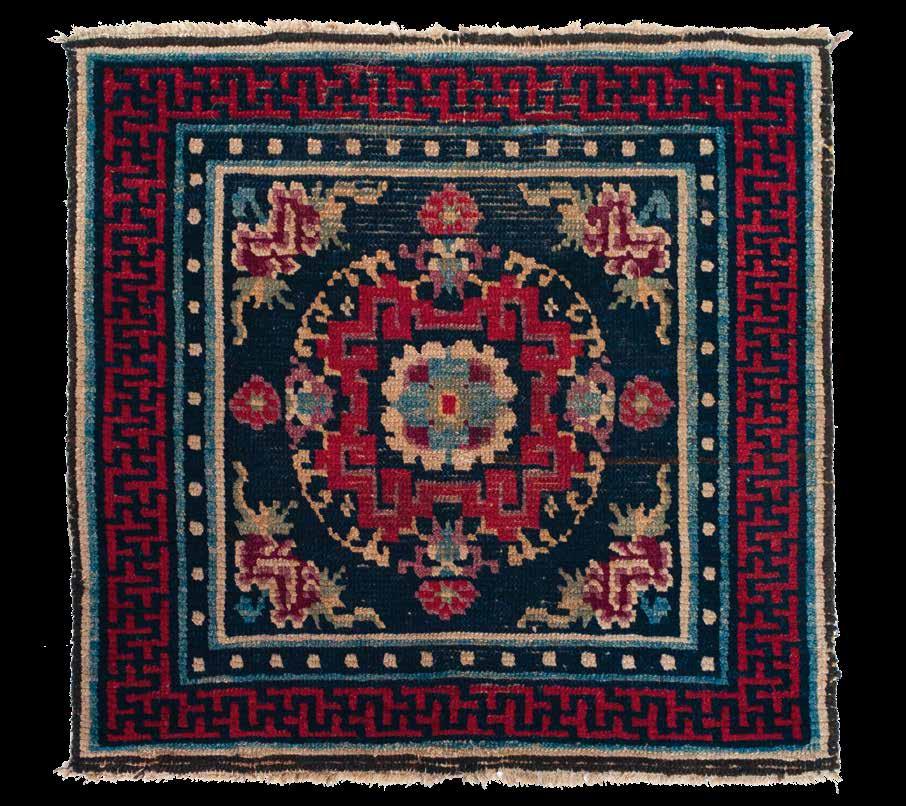
Early 20th century 170 × 88 cm cat: 1.133
overleaf plate 1.45 detail
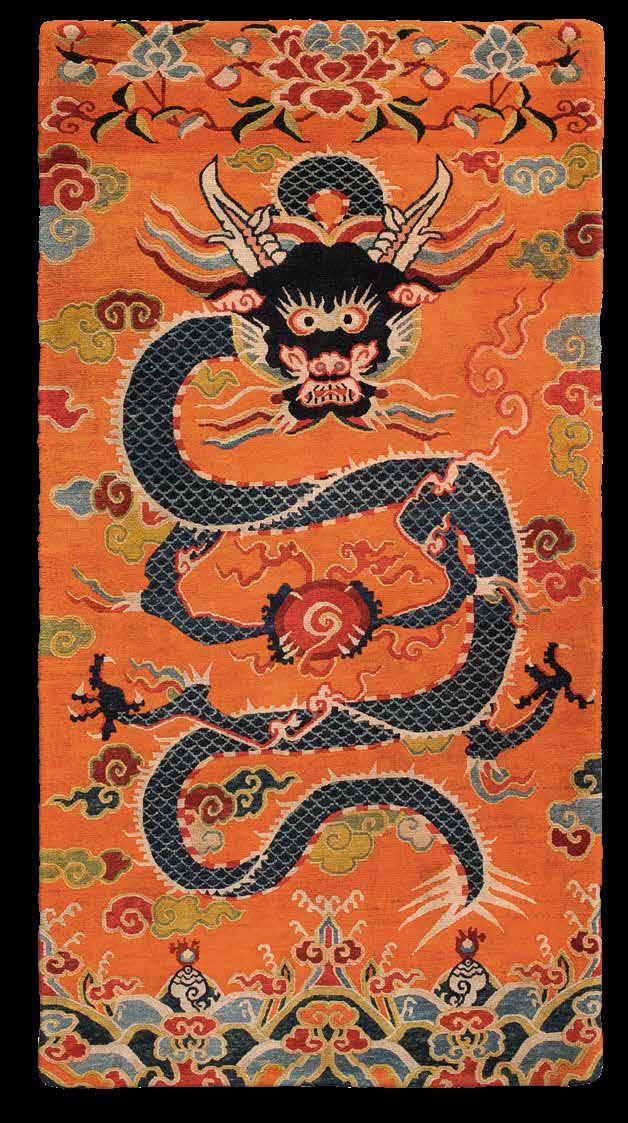
Early 20th century 59.5 × 84.5 cm cat: 1.150
overleaf plate 1.49 detail
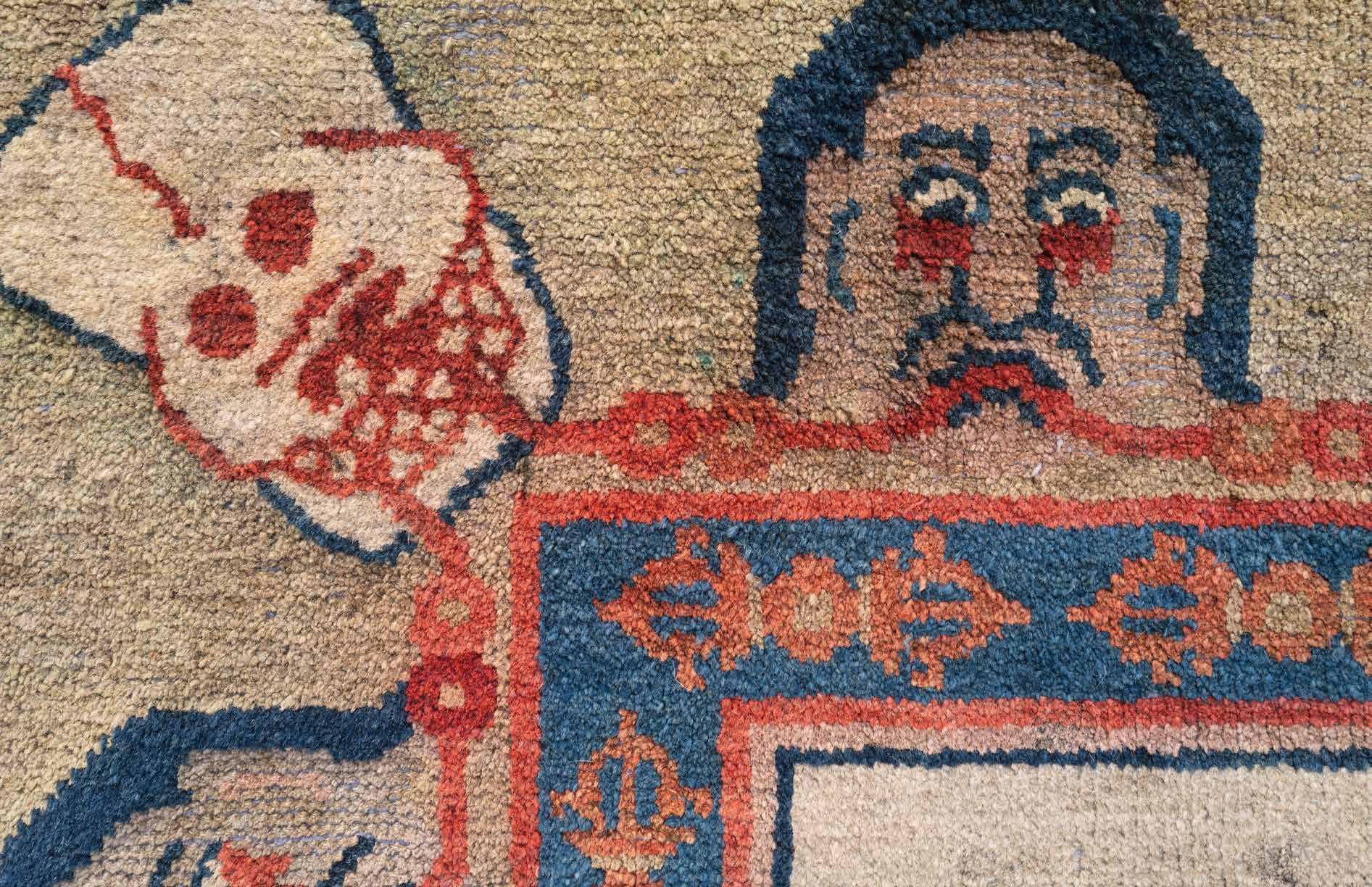
great. But where do the dyes used for these Tibetan rugs come from? From madder we get red, right? And yellow? And green, that’s a combination of yellow and blue I guess and when the yellow fades it moves to the blue/ green again, right?
TC: Yes, red comes from madder, while yellow may come from a variety of local sources including mustard for one, or chutsa, the root of a high-altitude wild rhubarb plant, barberry and tumeric plants. Shades of brown come from walnut husks, blue comes from indigo imported from India and China.
RM: One really interesting colour is lac, which you wrote was imported from Bhutan to achieve light aubergine and pale red shades – we have spoken about it several times in the past. The great dragon mat (fig 4) was tested revealing the presence of lac. Denwood wrote, ‘Lac-dye is employed by Tibetans to give reds, usually of a scarlet hue. Being derived from the egg-sacs of Coccus lacca or closely related insects which live on the bark of certain Indian and Burmese trees, notably the Bastard Teak or Butea Gum. The female insects extract the dyestuff from the tree, together with a resin shellac, glueing themselves to the twigs with a hard incrustation. The encrusted twigs, when broken off, are known as stick-lac, and it was in this form that lac was imported into Tibet from Assam and eastern Bhutan’ (p.22). And then you said the Lhasa authorities limited the use of foreign dyestuffs in the 1840s, mentioned by Huc and Gabet in their book Travels in Tatary, Tibet and China.
TC: Let me read the Huq and Gabet passage to you: ‘The Pebouns are also the dyers of Lhasa, these colours are vivid and enduring, stuffs upon which they have operated may ware out but they never loose their colour, they are only permitted however to dye the poulou. All stuffs coming from foreign countries must be worn as they are, the government absolutely prohibiting the dyers from at all exercising their industry upon them’. By restricting the dyers to working with only local dyestuffs on Tibetan wool, the Lhasa authorities effectively banned the use of imported dyes. But Tibet was a crossroads of Asia and was never isolated. Look at all those thogkchas, bronze amulets that came out of Tibet. These are of different cultures. I think many are from different places, including Siberia, Central Asia, and Persia, but they’re all called ‘Tibetan thogchas’ because they were found there. At one point, I even wrote an article for Oriental Rug Review, calling it ‘Tibet – The Crossroads of Asia’.
RM: What other influences do we have? East Turkestan, Khotan, Yarkand, and of course China. But those from China probably arrived later?
TC: No, the history of Tibet has been very much involved with China for a long period of time.
